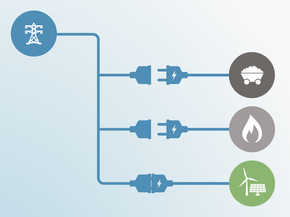Assumptions
Historical emissions
Historical emissions in all sectors excluding LULUCF for the period 1990–2019 were taken from PRIMAP (Gütschow, Günther, Jeffery, et al., 2021).
LULUCF emissions for 1990–2018 were taken from the national GHG inventory submitted as part of Argentina’s Fourth Biennial Update Report submitted in March 2022 to the UNFCCC.
2020 and 2021 emissions were estimated as follows:
- Energy: based on data from BP’s Statistical Review of World Energy. This dataset covers energy CO2 emissions up to 2021. To estimate energy emissions for 2020 and 2021, we apply growth rates from the BP dataset to the last available data in PRIMAP (2019).
- Industry: we used real GDP change as a proxy for the change in industrial emissions, modifying these by the same amount [GDP data source: World Bank World Development Indicators (World Bank, 2021)].
- Agriculture and waste: We assume that the impact of the pandemic on agriculture, waste and other emissions will be minimal and so have extrapolated emissions for 2020 and 2021 using a 5-year average from historic emissions.
NDC and other targets
NDC absolute emissions levels including LULUCF are provided directly in the NDC for the unconditional target (Government of Argentina, 2021). To distinguish LULUCF emissions from total GHG emissions and calculate its ratings, the CAT assumes that the mitigation efforts will be proportional to the sector's relevance in terms of emissions contribution, thus maintaining the share of each sector's emissions similar across the years until 2030. This assumption is in line with the information provided by the Ministry of Environment on the expected shares of emissions of each sector in the present and until 2030 under their NDC reference scenario (Ministry of Environment of Argentina, 2016). We also recalculate the target, that is originally communicated as an absolute number calculated using SAR GWP, to AR4 GWP. To do so, we calculate the difference in emissions between the last inventory year (2018) and the target year (2030) in SAR and apply the growth rate to the last historical value in AR4.
Current policy projections
The starting point for the range of our current policy projections are projections developed by National University of Buenos Aires (UNICEN), in the report “Current situation and GHG emissions projections in Argentina” (Keesler et al., 2019). This study provides projections for all sectors based on current sectoral plans and actions in place, including the exploitation of non-conventional fossil fuels.
The UNICEN scenarios are the starting point for the range of our current policy projections. The UNICEN projections assume a penetration of renewables that follows the current trend, account for barriers in the implementation of energy efficiency measures and takes into account the significant development plan for the exploration and exploitation of fossil fuels (fracking and off-shore oil and gas production). The baseline scenario has the following assumptions:
- Accounts for the penetration of renewable energy in the power sector following the current trend
- Adjusts the emissions curve of the power sector to capture the current development of nuclear energy
- Accounts for barriers in the implementation of energy efficiency measures presented in the sectoral plans (buildings, industry, and transport)
- Takes into account the significant development plan for the exploration and exploitation of fossil fuels (fracking and off-shore oil and gas production)
- The document does not mention the carbon tax
UNICEN projections are aligned with the Energy Scenarios 2030, which the former Ministry of Energy and Mining published in early 2018 to provide additional scenarios under different assumptions (Ministry of Energy and Mining Argentina, 2018). While the Energy Scenarios 2030 are a detailed representation of possible future planning for the energy sector, additional actions need to be taken to achieve the share of low-carbon electricity supply assumed by the scenarios. One important area of improvement is the grid integration: the energy scenarios assume a large amount of additional wind capacity in Patagonia (Ministry of Energy and Mining Argentina, 2018). Investments in the electricity grid will be critical to transport the electricity generated to urban centres. With the focus of the Secretariat of Energy on oil and gas exploitation and distribution, reaching the renewable energy penetration indicated in the Energy Scenarios 2030 seems less likely than in earlier assessments.
For the remaining sectors, we used the reference scenario projections of the National University of Buenos Aires (UNICEN), in the report “Current situation and GHG emissions projections in Argentina” (Keesler et al., 2019).
We harmonise the projections to the PRIMAP historical data by applying the growth rates of the projections to the latest available historical data point. The current policy projections range in this update comes from using two different GDP projections to account for the economic impact of the COVID-19 pandemic.
Planned policy projections
Similar to current policy projections, planned policy projections followed the same methodology with different assumptions:
- For the energy sector projections, we used an alternative scenario from UNICEN (Keesler et al., 2019) that assumes full implementation of the renewable targets, additional energy efficiency measures and other mitigation measures from the sectoral plans. This set of assumptions are aligned with Energy Scenarios of 2019 from the Ministry of Energy (Ministry of Energy and Mining Argentina, 2018).
- For the remaining sectors, we used the reference scenario projections of the National University of Buenos Aires (UNICEN), in the report “Current situation and GHG emissions projections in Argentina” (Keesler et al., 2019).
COVID-19 impact
We applied a novel method to estimate the COVID-19 related dip in greenhouse gas emissions in 2020 and the development through to 2030:
- We first update the current policy projections using most recent emissions projections by UNICEN, prepared before the pandemic (as outlined above).
- We then distil the emissions intensity (GHG emissions/GDP) from this pre-pandemic scenario and apply to it most recent GDP projections that consider the effect of the COVID-19 pandemic.
- To capture a wide range, we use two independent GDP projections: one from IMF (IMF, 2020) and one from the Central Bank of the Republic of Argentina (BCRA) (Banco Central de la República de Argentina, 2020).
- Since the most recent GDP projections from the BCRA only provide values for years 2021-2023, we assume GDP growth rates for the period 2024-2030 remain constant at 2023 levels.
- The IMF WEO includes projections up to 2027. For 2028-2030, we assume GDP growth rates remain constant at 2027 levels.
Global Warming Potentials values
The CAT uses Global Warming Potential (GWP) values from the IPCC's Fourth Assessment Report (AR4) for all its figures and time series. Assessments completed prior to December 2018 (COP24) used GWP values from the Second Assessment Report (SAR).
Further analysis
Latest publications
Stay informed
Subscribe to our newsletter






